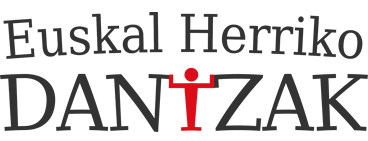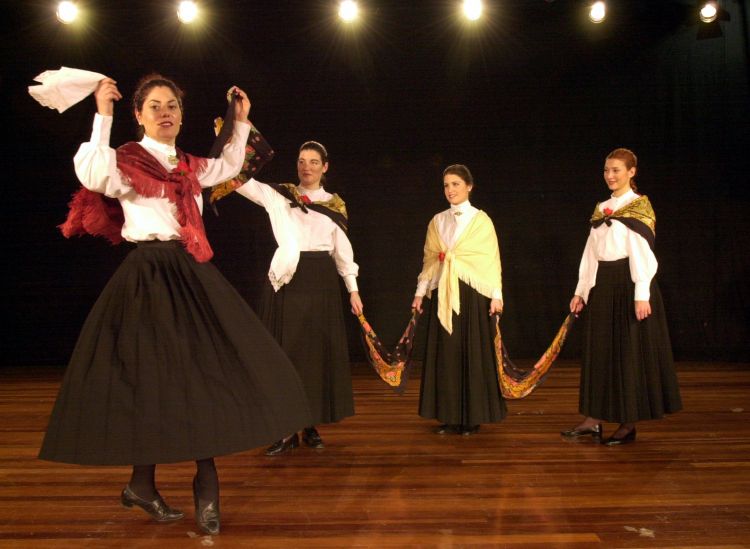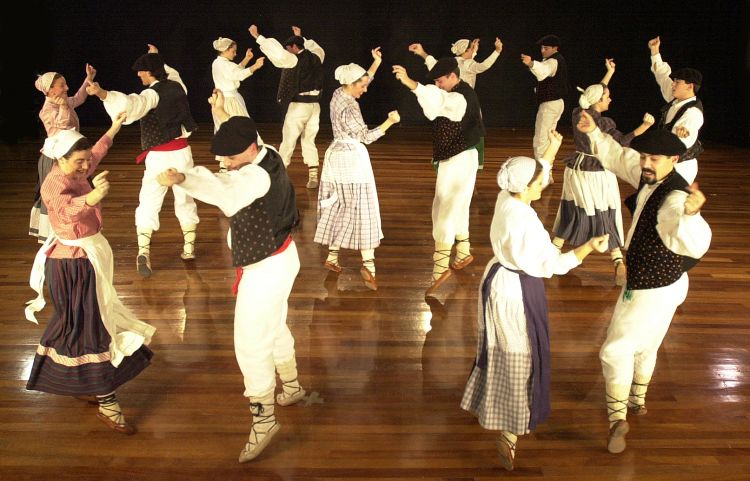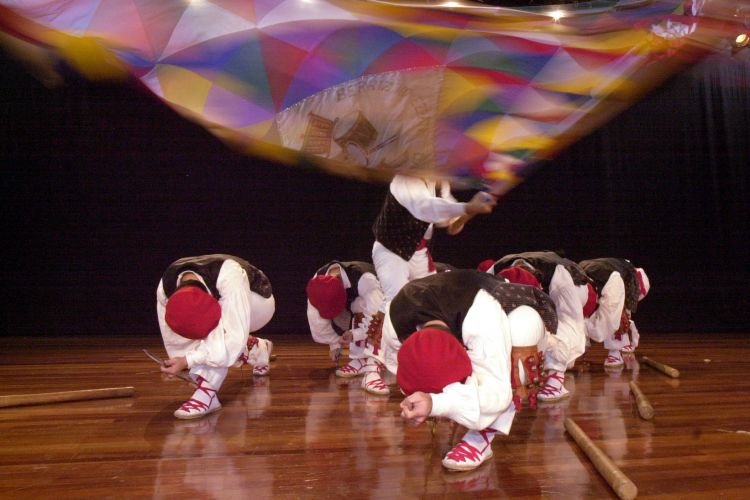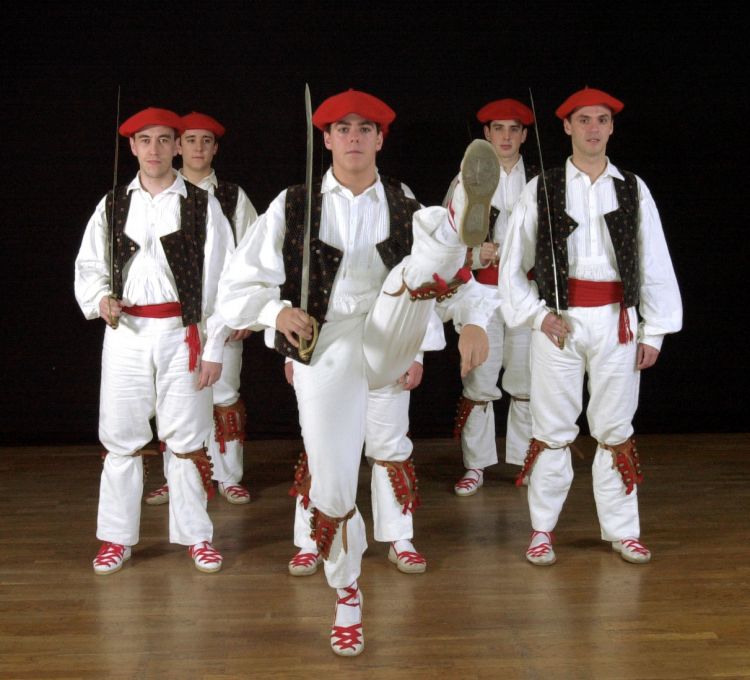Soka Dantza
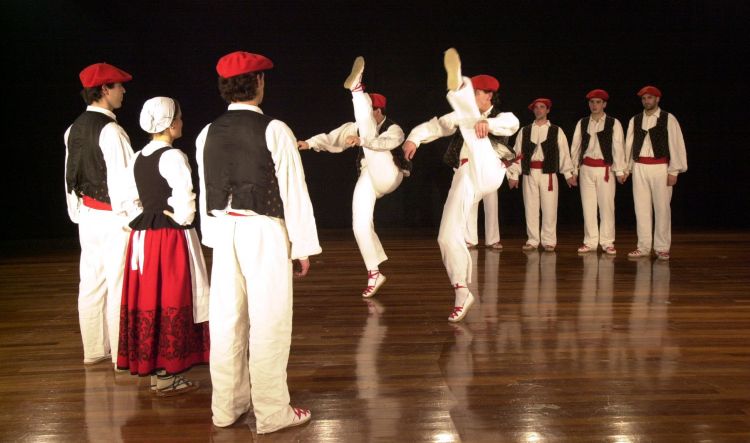
It is a circular, social, mixed dance that is performed in an anti-clockwork direction, and where, even though it has a structure that is common in Bizkaia, some variations can be found.
The overvaluation that has been made of the first dancer or aurreskulari (literally, the front one) has meant that this dance as also become known as Aurresku and as Aurresku of the Parish, as opposed to the Honour Aurresku or exhibition Aurresku, which were more recently created.
B. Mª. GARRO (Cómo Bailar el Aurresku ("How the Aurresku is danced") an article published in the Revista Dantzari, number 4, 1966, pages 16 to 22) summaries the parts of the dance, together with a series of tips for the dancers. The dance can be divided into five parts according to the steps and music:
The Challenge or Oillar Auzka (J. L. ETXEBARRIA also calls it Aurrez Aurre), which in turn is made up of a call or Deya, four sub-parts, and the exit or final call. After the dancers have filed out and without holding hands, they form a half moon facing the authorities. The Aurreskulari and the Atzeskulari then move forward using burpiles (grabiletia or gurpil) and turning their right hands. They perform a series of steps and they return to their places and a chain is formed.
The Pasamanos or Esku Aldatzekoa (J. L. ETXEBARRIA prefers to call it Abarketak), which is made up of two sub-parts that are repeated once with all the dancers and a second time with each dancer. While they go round the festive spot, the aurreskulari begins to dance and when he has finished, the first zerbitzari then does so.
The Contrapás (J. L. ETXEBARRIA divides it into two parts: Erregelak or Ingurutxo, when the young girls are chosen and Banango Zaharra or homage), which is played until all the girls have been brought into the dance chain. It is the most ceremonious part, as it is when the girls or women who are taking part in the chain are honoured. The zerbitzariak therefore ask the Aurreskulari for their partner, and go to her and ask her consent. Then, they both stand outside the dance chain, flanking the person who has entered and the applicant dedicates his performance to her. GARRO says that some dancers put their beret (Txapela) on her head, in her hands on at her feet. Finally, the girl joins in the dance. As she goes round the square, a first bridge is formed, which she has to pass under and this bridge has been interpreted as being selective. She then forms a second bridge with the Atzeskulari's dancing partner. Finally, they go to look for the other young girls that are interspersed between the men.
The final Zortziko (which J. L. ETXEBARRIA calls Eskasak) is danced by the girls and boys.
GARRO says that it ends with Orripeko or Fandango, which is also known as Jota, even though the author does not agree, the Arin Arin or Porru Salda, and the Biribilketa or Street Running, as they do not strictly speaking belong to the Soka Dantza, and are dances which are also performed independently and will be dealt with in another section.
As far as the tips that B. Mª. GARRO offers to the dancers are concerned, we find that there should be eight dancers, even though the performance can take place with more or less male dancers (as, at least in the case of Bizkaia's Duranguesado, the Soka Dantza is usually performed after the men's dances, and these are eight). Both the first and the last dancer, the aurreskulari and the atzeskulari, have to know how to dance all the parts, as their roles changes during the dance. The zerbitzariak are in charge of bringing the girls into the dance, first following the instructions of the Aurreskulari, then those of the Atzeskulari, and, finally, according to their own judgement. Together with the other four dancers, they should at least know how to dance the Pasamanos, Orripeko (Fandango) and Arin Arin.
It is a social dance that has spread throughout nearly the whole of Bizkaia, as it is to be found in the Duranguesado and the Gernika area, with songs for the occasion, in Bilbao, in Arratia and the Encartaciones region, and is the most widespread, together with the Fandango or Orripeko and the Arin Arin.
Clothing
The beret
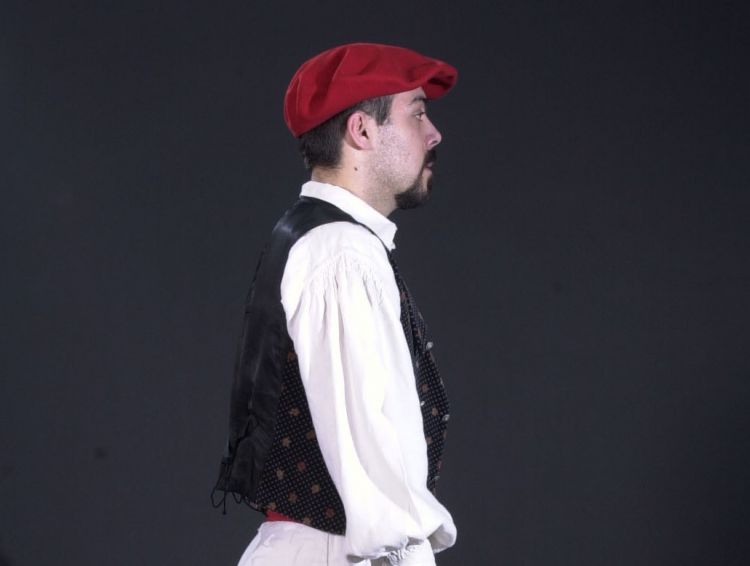
As the Soka Dantza is a social dance and therefore not subject to any ritual, it has been performed by dancers wearing a wide range of clothing typical of each period in question.
We have no records about the origin of this type of dances, even though they seem to be very old as they are found throughout the north of the Peninsula, since Soka Dantza, Gizon Dantza, Giza Dantza, etc. have spread throughout the whole of the Basque-speaking area.
On the other hand, we should bear in mind that the Soka Dantza or Aurresku has been kept alive in Bizkaia in those town where another type of more ritual dances are to be found, as is the case of the Dantzari Dantza in Duranguesado, the Xemeingo Ezpata Dantza in the town bordering with Markina, or the Kaixarranka, which is currently performed in Lekeitio.
We therefore find different costumes in different towns and at different times, as can be seen from pictures and drawings.
The beret is now part of the uniform of most of the world's armies. The Basque version, called txapela has, in various sizes, shapes and colours, long been the typical headgear of Basque men, particularly in farming areas (though the blue beret seems to have been a characteristic of the men of Bilbao). In the Soka Dantza it has an important function: when the dancer introduces himself to the lady of his choice, he must remove his beret. At all other times in the performance his head is covered. Researchers disagree as to whether he should then place it on the lady's head or drop it at her feet. This represents a desire to join with her or pay homage to her.
Implements
The scarf
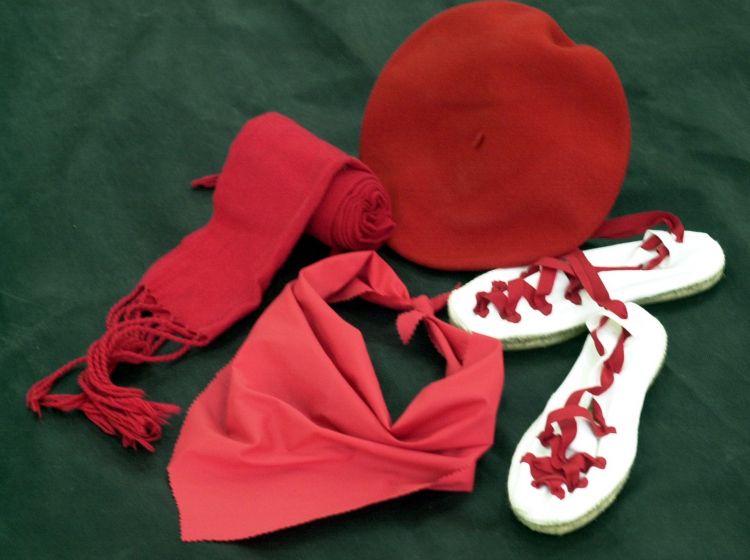
The scarf is used to prevent hand touching hand during the performance. It seems that in former times (and indeed in some areas still today) the "chain" was formed by directly linking hands. But more recently, possibly in the 17th or 18th century and most certainly throughout the 19th, it became common for scarves to be used to create the links.
It is not clear whether this was done for reasons of hygiene, as some ethnographers maintain, to prevent dancers from passing secret messages to each other, or even to enable anyone who felt aggrieved or injured during the performance to abandon the dance.
Music
There are no references to the Soka Dantza being performed other tan to the sound of the txistu and the tamboril, sometimes accompanied by the silbote and the atabal.
History and Geography
The Soka Dantza ("chain dance") is known throughout Basque culture, but by different names: apart from the name used here, the most common include Gizon Dantza, Esku Dantza and Aurresku. These are social dances in which men and women dance together holding hands or linked by scarves or other elements, and as such belong to a more general type of dancing which is found not only in Bizkaia, the Basque Autonomous Community or even the wider, Basque-speaking area known as Euskal Herria, but all over Europe.
In Bizkaia this seems to be the most popular dance, as records of it can be found throughout history everywhere from the Las Encartaciones area on the border with Cantabria in the west to the eastern end of the territory.
Particular mention must be made of Lekeitio, where there is a dance by women known as Aurresku or Soka Dantza for women, which may be similar to those cited by J. I. IZTUETA (1767-1845) as being performed in Gipuzkoa in the 18th and 19th centuries. It is unusual in that elsewhere it its usually men who perform this dance.
The origin of the Soka Dantza or Aurresku is unknown. In his World History of Dance, Curt SACHS associates it with eminently pastoral dances, and does not give even a rough date for it, though he does mention figures and sketches typical of classical Greece which could be related to some extent.
Other researchers, centring their work more on historical archives, such as Iñaki IRIGOYEN, Felipe AMUTXASTEGI, Emilio Xabier DUEÑAS, etc. track down these dances in regard to three points.
In the 15th century the Soka Dantza or Aurresku must have been very common, and the dance was usually opened by the ecclesiastical authorities.
In the 16th and 17th centuries the official church line was formally to oppose merry-making, and priests and ministers were expressly prohibited from leading or taking part in dancing (though this seems to have had little effect in some villages). At this time musicians who played in a manner that encouraged dancing between the sexes could be excommunicated.
In the 18th and early 19th centuries the Soka Dantza was the mixed, social dance par excellence. However a variation seems to have entered the dance at that time with the dancers being linked not by their bare hands but by scarves. The excuse given was that this was more hygienic, but other social matters such as the possibility of leaving the chain and the preventing of the passing of secret messages between dancers were also important.
Finally, in the second half of the 19th century and the early 20th century, with industrialisation in full swing, the dance came to be limited only to certain festivities, at which other performances were also staged. Like other traditional dances, the Soka Dantza began gradually to disappear, though a strong festive tradition was maintained.
The last period dates from the late 19th century and continues through the 20th, with the renaissance in traditional culture which followed the Carlist Wars, and great efforts to recover the ground lost up to that time in terms of culture. Archives and private libraries were studied for information on activities in earlier centuries. At this time the Aurresku for Women in Lekeitio and the Ezpata Dantza in Xemein were recovered. The structure of the Soka Dantza in Bilbao was recovered some time later.
Location of the Soka Dantza in the 20th century
The Soka Dantza seems to have been maintained in those villages were other ritual type dances also existed.
In this context, the Soka Dantza can be found in: ABADIÑO, BERRIZ, GARAY, IURRETA, IZURTZA, MAÑARIA, ONDARROA and XEMEIN.
Location of the Soka Dantza before the 20th century
Before the 20th century the Soka Dantza seems to have been found in most of Bizkaia. There are historical references to it in Arratia, in Las Encartaciones, in the Gernika area, on the coast and in Bilbao. Some versions, notably that of Bilbao, have experienced something of a renaissance in recent years, while others have not yet been revived.
Currently, however, no such references exist.
